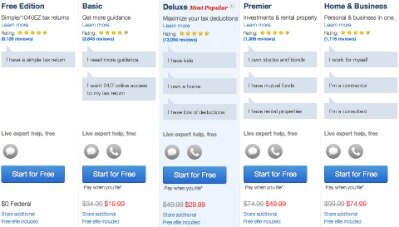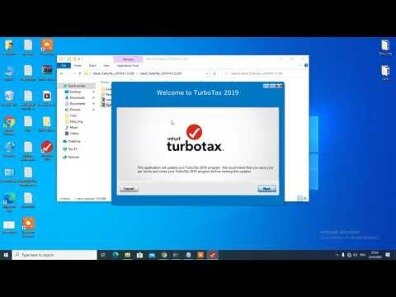Preferred vs common stock: What’s the difference?
Contents:

See JSI’s FINRA BrokerCheck and Form CRS for further information. When you enable T-Bill investing on the Public platform, you open a separate brokerage account with JSI (the «Treasury Account»). Preference shareholders do not enjoy voting rights like their common shareholder counterparts do. Non-cyclical stocks operate in recession-proof industries that typically perform well regardless of the state of the economy.
They provide a relatively cheap way to raise capital, can be used in balance sheet management to keep bond issuance low and offer flexibility in suspending dividend payments when needed. Depending on whether the issued preferred stock is a cumulative or non-cumulative interest payment, a company might have to pay investors missed dividends before restarting future ones. Non-cumulative preferred stock still doesn’t have voting rights attached to it, but owners of this type of preferred stock would lose any dividend that the company was unable to pay in a particular year. Let’s assume that Harry’s Hardware Hut had non-cumulative preferred stock consisting of 10,000 shares with a dividend rate of $1.50 per share.
What Is A EV/EBITDA Ratio? A Quick Explanation – Seeking Alpha
What Is A EV/EBITDA Ratio? A Quick Explanation.
Posted: Fri, 31 Mar 2023 07:00:00 GMT [source]
Management must factor annual dividends into the cost of raising money with preferred shares because preferred shareholders are entitled to them. In comparison to common stockholders, preferred stockholders have a stronger entitlement to payments . The ownership of stocks generally represents an ownership stake in the issuing company, even though this is still true for preferred stockholders, their ownership is limited. This is because they do not have a say in the issuing company because they do not have voting rights and can therefore not participate in the company’s decision-making processes. When the issuing company fails to pay dividends, the dividends accumulate for holders of cumulative preferred stock and all unpaid dividends must be paid in arrears. Holders of preferred stocks generally earn a fixed income through quarterly, semi-annual or annual dividends which they are entitled to receive from the issuing company.
Effects of changes in interest rates to preferred stock
Some forward thinking founders today will also carve out a percentage of shares specifically for upcoming fundraising plans. You may be a master of your industry, hyper talented at running operations in a startup setting, and even an artful presenter who finds it easy to attract investors. Yet, knowing how stock works, and its impact on your future will directly determine how enjoyable and profitable the rest of your entrepreneurial journey is. But not all stockholders’ votes are weighted equally—the number of votes you get depends on how many shares you own.
The ultimate effect is recurring income from an investment, despite the fact that the process is distinct. When the company files for bankruptcy, then the valuation of the company takes place, and assets liquidate. Proceeds from the liquidation go to the preferred shareholders instead of the common shareholders. The proceeds left after payment to preferred shareholders will go through distribution among common shareholders. The management of a firm must evaluate the expenses of all financing options and select the most advantageous one.
Funding When Capital Isn’t Cheap – Andreessen Horowitz
Funding When Capital Isn’t Cheap.
Posted: Thu, 22 Sep 2022 07:00:00 GMT [source]
Participating preferred stock can be a great investment for risk-averse investors who want to receive quarterly dividends and have creditor priority in case of bankruptcy. As with most investments, you can buy or sell participating preferred stocks through an investment professional. The price of a participating preferred stock varies depending on the company and the terms of the security. However, they usually cost more than regular preferred stocks. This means that, if the company liquidates, preferred shareholders usually receive their initial investment before common shareholders. Preferred shares have the ability to appreciate in value over time, but not nearly as high as common shares.
The continuous cash dividends that owners receive make up a preferred stock’s intrinsic value. On the other side, it is more challenging to evaluate a common stock. So unlike debt holders, preferred shareholders will not have to worry about the maturity of their fixed income source. Like many callable bonds, many preferred shares also have a callability option.
This advantage is quite enticing for the investor who has a low level of risk tolerance. Holding this asset means that the company will guarantee a dividend each year. If it fails to turn a profit and must close, then you’ll receive compensation for your investments sooner. Preferred stockholders also stand in line ahead of common stockholders in case of bankruptcy or liquidation.
Advantages of Preferred Stock
FinanceBuzz has partnered with CardRatings for our coverage of credit card products. FinanceBuzz and CardRatings may receive a commission from card issuers. Whatever your level of experience, make sure to do your due diligence before investing in a company. Have you ever wished for the safety of bonds, but the return potential…

With some companies, dividend payouts from common stock shares increase consistently over time. The Dividend Aristocrats, for example, represent the companies that have raised their dividend payout for 25 or more years consecutively. Preference shares are company stock with dividends that are paid to shareholders before common stock dividends are paid out. In the event that a company experiences a bankruptcy and subsequent liquidation, preferred shareholders have a higher claim on company assets than common shareholders do. However, keep in mind that common stocks are considered capital assets by the Internal Revenue Service. You’d pay taxes on your gains, effectively reducing your earnings.
Preferred Stocks Versus Bonds
Dividends are paid to investors on a set schedule for as long as they own preferred stock shares. This means that the company is not beholden to preferred shareholders the way it is to traditional equity shareholders. Although the guaranteed return on investment makes up for this shortcoming, if interest rates rise, the fixed dividend that once seemed so lucrative can dwindle. This could cause buyer’s remorse with preference shareholder investors, who may realize that they would have fared better with higher interest fixed-income securities. Investors require detailed information about a company’s financial position and operational status. Significantly preferred stockholders may be entitled to information rights for their stock purchase.
Best Florida Sports Betting Apps: Top Betting Apps in FL Best Daily … – The Daily Collegian Online
Best Florida Sports Betting Apps: Top Betting Apps in FL Best Daily ….
Posted: Fri, 21 Apr 2023 20:06:00 GMT [source]
In addition, even if JPMorgan doesn’t buy these fte meaning back, keep in mind that preferred shares aren’t necessarily guaranteed a dividend. They are merely the first shares in line to receive dividends first if a company decides to pays a dividend. Owning preferred shares in retirement accounts such as IRAs or 401s will defer any tax liability until you make withdrawals, including for required minimum distributions, or RMDs.
So they are a higher risk investments than traditional fixed income investments. Because common stock is more volatile, it is considered a higher risk investment than preferred stock. But common stock also has the potential to accumulate capital appreciation in the long run, which can significantly increase the investment value. Preferred stocks pay a fixed dividend to shareholders, are prioritized in the event of bankruptcy, and are less impacted by market fluctuations than common stock.
That helps them to further reduce the cost of capital, although this issue is another disadvantage that investors must consider. The big selling point is that preferred stocks can offer steady income with higher yields. And, yes, they could very well deserve a place in your portfolio, complementing, say, your allocations to dividend stocks and fixed income investments. Whether it makes sense to invest in preferred stock or common stock comes down to what you need. If you want to have consistent dividend income over time, then preferred stock could be a better fit. The dividends may be higher than what you’d get with common stocks and depending on the stock, you may have the option to convert your shares.
Some preferred shares have the option to convert themselves to common stocks. If the common stock performs well in the market, then preferred shareholders can convert their preferred shares into common shares. Investors can receive a fixed dividend rate with their preferred stock, but it is not a guaranteed offering. It might even be subject to redemption at the issuer’s option, which means this security behaves more like a bond than it does a stock. That means the shares don’t respond to higher corporate earnings in the same way that common shares do unless you have the conversion feature available to you as an investor. If you are a preferred stockholder, then you don’t receive the same voting rights as someone that holds common stock.
Common Stock Vs Preferred Stock
Most serious angels and venture capital firms will insist on getting preferred stock in return for their investments. Most expect the founders to retain common stock because of the advantages that this investment vehicle provides. The early rounds of investment may be in the form of convertible notes that go into preferred stock in a later round. Common stock dividends get taxed as unearned income at the normal tax rate in the United States. That means you’ll pay the amount that’s based on your current bracket.

Investors tend to buy shares of preferred stock for their consistent income and lower financial risk if a company faces losses. The most significant difference between preferred vs. common stock is that preferred stocks receive payment priorities and have no voting rights. When investing in startups, investors are typically not offered common stock. Instead, investors prefer preferred stock or convertible instruments. Typically, these convertible debts, such as SAFE notes and convertible notes, change to preferred stock upon triggering events. Many preferred stocks allow investors to convert their shares to common stock.
All securities are offered through VF Securities, Inc. (member FINRA/SIPC). More information about this firm can be found at and at SIPC.org. Vested Money is a wholly owned subsidiary of Vested Holding and is affiliated with both Vested Finance and VF Securities through the common ownership of Vested Holdings Inc. Vested and its affiliates do not provide tax, legal or accounting advice. This material has been prepared for informational purposes only, and is not intended to provide, and should not be relied on for, tax, legal or accounting advice.
Preferred stock refers to a class of ownership that has a higher claim on assets and earnings than common stock has. Cyclical stocks are directly linked to the economy’s performance and typically track economic cycles. They outperform other securities when consumers have more discretionary income during solid financial periods. Both types of stocks might see a valuation increase over time. Thousands of dividend investors trust our online tools and research to track their portfolios, avoid dividend cuts, and achieve lasting financial freedom. Our list of MLP stocks includes dividend yields, Dividend Safety Scores, and analysis of all 42 MLPs, including the 5 best MLPs for income.
- Whether or not they are a good idea depends on your personal investing portfolio and investing objectives.
- Cumulative shares include a clause to protect the investor against downturns in company profits.
- Many preferred stocks allow investors to convert their shares to common stock.
- In that case, the company will have to keep a record of the unpaid dividends and clear the cumulative dividends with the next period’s profit.
More recently, the boom in angel investing and venture capital has made preferred stock much more prominent. It is expected by most investors when it comes to participating in startup funding rounds. If you are considering investing in stocks, you should carefully review the key factors of both common and preferred stock before purchasing. Due to the possibility of recurrent cash payments, preferred stock is frequently linked to bonds. These stocks contribute to the share capital and paid-up capital of the issuing company. Both share capital and paid-up capital is funds gotten from the sale of stocks.
The first option is buying individual preferred shares via your broker, just as you would a common stock. All capital gains are treated the same as with common equity, meaning they are taxed at the capital gains rate. If you own the shares for at least a year, then the tax rate will be the long-term capital gain rate. If you hold for less than a year, then the short-term capital gains rate applies, which is equal to your top marginal income tax rate.
Like equity, it doesn’t have any maturity; like debt, the dividend percentage is fixed. The payment to preferred shareholders comes before common shareholders, so they have a priority claim on dividends and distribution of assets in case of liquidation. For example, the major source of return on a preferred stock is usually its dividend. They are also more likely to pay out a higher yield than common shares. Like bonds, preferred stock performs better when interest rates decline.
- So, whether you’re reading an article or a review, you can trust that you’re getting credible and dependable information.
- The tradeoff for the lower levels of market risk with preferred stock versus common shares is that there is little movement in the equity value of the investment.
- Dividend yields are also usually higher than bond yields because debt costs are tax-deductible, whereas preferred share costs are not tax-deductible.
In the past 10 years, the market price of PFF has slightly declined. However, PFF paid a dividend of 4.47%, while SPY paid a dividend of 1.46%. We may receive compensation from the products and services mentioned in this story, but the opinions are the author’s own. Learn more about how we make money and our editorial policies. The best recession-proof stocks can withstand high inflation and rising interest rates that threaten to push the economy into a downturn in 2023. Simply put, anyone considering buying preferred stock needs to be willing to do a lot of homework.

A participating preferred stock is a type of security that gives the holder certain rights to participate in the profits of the company. Preferred stocks are a hybrid security that has components of both stocks and bonds to them. They are stocks in the capital structure of a firm, so you own an equity in the firm that you would purchase that. So if you own GE preferred stock, for example, you are a shareholder of GE but they’re usually non-voting. Here is a general overview of what they are and their individual differences. Common stock often participates in capital appreciation to a greater extent than preferred stock.



Leave a comment